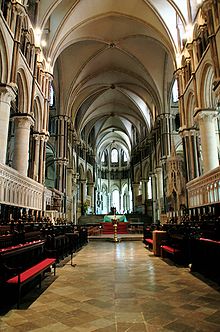
Back النهضة في القرن الثاني عشر Arabic দ্বাদশ শতাব্দীর রেনেসাঁ Bengali/Bangla Renaixement del segle XII Catalan Tolvte århundredes renæssance Danish Hochmittelalterliche „Renaissance“ German Renesanco de la 12-a jarcento Esperanto Renacimiento del siglo XII Spanish XII. mendeko Pizkundea Basque رنسانس سده دوازدهم Persian 1100-luvun renessanssi Finnish

The Renaissance of the 12th century was a period of many changes at the outset of the High Middle Ages. It included social, political and economic transformations, and an intellectual revitalization of Western Europe with strong philosophical and scientific roots. These changes paved the way for later achievements such as the literary and artistic movement of the Italian Renaissance in the 15th century and the scientific developments of the 17th century.[1]
Following the Western Roman Empire's collapse, Europe experienced a decline in scientific knowledge. However, increased contact with the Islamic world brought a resurgence of learning. Islamic philosophers and scientists preserved and expanded upon ancient Greek works, especially those of Aristotle and Euclid, which were translated into Latin, significantly revitalizing European science.[2] During the High Middle Ages, Europe also saw significant technological advancements which spurred economic growth.
During the 12th century, Scholasticism emerged, marked by a systematic and rational approach to theology. The movement was strengthened by new Latin translations of ancient and medieval Islamic and Jewish philosophers, including Avicenna, Maimonides, Averroes.
The early 12th century saw a revival of Latin classics and literature, with cathedral schools like Chartres and Canterbury becoming centers of study. Aristotelian logic later gained prominence in emerging universities, displacing Latin literary traditions until revived by Petrarch in the 14th century.[3]
- ^ (Bauer 2013, p. 1 – preface)
- ^ Robert Robert Louis Benson; Giles Constable; Carol Carol Dana Lanham, eds. (1991). Renaissance and Renewal in the Twelfth Century. Harvard University Press. p. 471.
- ^ (Haskins 1927, pp. 98–99)